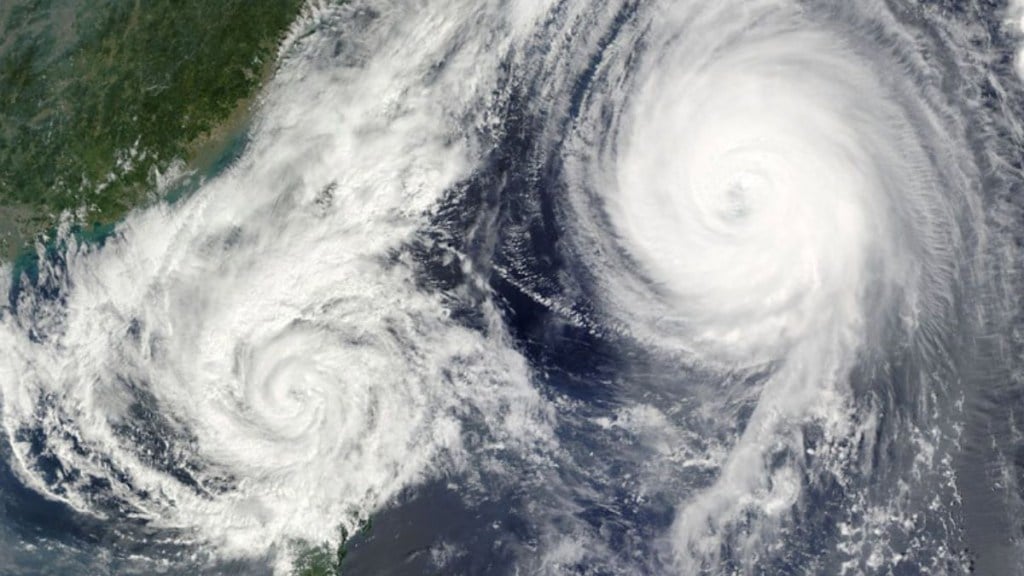As Cyclone Tej continues to intensify into a ‘severe cyclonic storm’ in the Arabian Sea, another cyclone is in a premature stage in the Bay of Bengal.
A rare phenomenon, which last occurred in 2018, is set to repeat this year in which two storms form at the same time. Both the Indian seas – the Bay of Bengal and Arabian Sea – are experiencing stormy activities.
The India Meteorological Department (IMD) reports the formation of Cyclone ‘Tej’ in the Arabian Sea, alongside the development of Cyclone ‘Hamoon’ in the Bay of Bengal, which is currently in its early stages.
According to the IMD, Cyclone Hamoon is moving close to the Andhra Coast and the depression is likely to intensify further into a depression over the West Central Bay of Bengal around October 23.
Impact on Indian Weather
While India proposed ‘Tej’, Iran chose ‘Hamoon’ as per the Indian Ocean Region’s cyclone naming convention. Expected to be 2500 kilometers apart, the cyclones will independently follow their paths, reports said. While minimal impact is foreseen for India, slight weather changes are anticipated in Chennai and Tamil Nadu’s coastal areas as the cyclones move away.
How are cyclones named?
The naming of storms is a long process involving authorities who are neutral in all matters. The names that are chosen should not hurt sentiments of any community.
Every few years, the 13 member countries select the names which are then adopted in chronological order. The names that the nations select should be free from any association with politics, political personalities, or religion. The names must also be short, easy to say and should not have more than eight letters.
A report by the Press Information Bureau explained the naming of the storm and said that the names of tropical cyclones that occur over the north Indian Ocean will not be repeated. The names will cease to be used after single use.
The name has to be a new one and should not exist in the existing list of any of the RSMCs worldwide.
The practice of naming storms began randomly and in the mid-1900s it was decided that the names of the storms would be feminine. The World Meteorological Organisation, later, came up with an alternative, saying that both masculine and feminine names can be used to name the storms.
The World Meteorological Organization (WMO) employs six rotating lists of names, with the 2019 list slated for reuse in 2025. However, exceptionally destructive storms may prompt name retirements for sensitivity, leading to replacement names. At the 27th WMO/ESCAP Panel on Tropical Cyclones in Muscat, Oman, in 2000, participants from Bangladesh, India, Iran, Maldives, Myanmar, and eight other nations collectively agreed to assign names on a rotational basis for cyclones in the Bay of Bengal and Arabian Sea.

